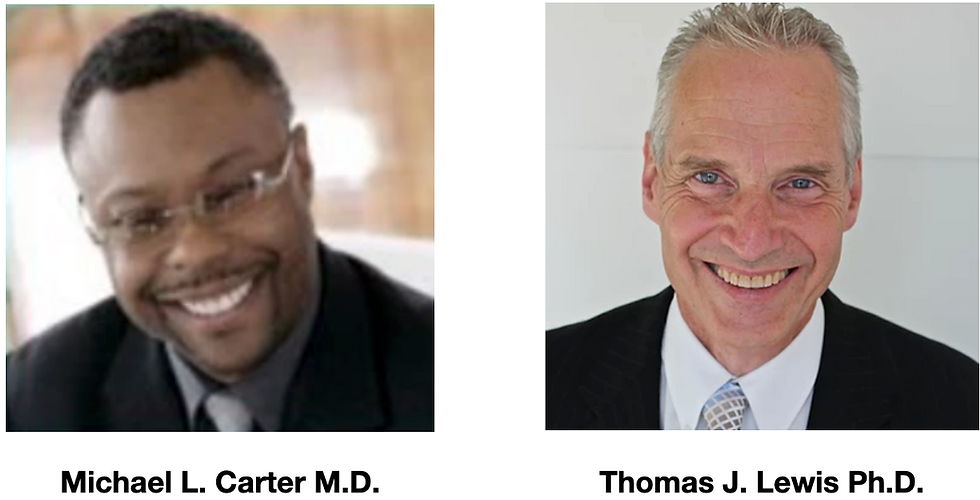Infection and Chronic Diseases - Part 1
- Dr. Thomas J. Lewis

- Mar 21, 2021
- 3 min read

Our Chronic Disease Support video on chronic infection and chronic diseases (Part 1) is now available on our youtube channel.
Here is an excerpt from a fabulous research paper by Dr. Kilmer McCully of Harvard. Dr. McCully is the pioneer of the homocysteine theory (proven theory btw) of cardiovascular disease.
Yes, it is a long title.....
Review and Hypothesis: Vulnerable Plaque Formation from Obstruction of Vasa Vasorum by Homocysteinylated and Oxidized Lipoprotein Aggregates Complexed with Microbial Remnants and LDL Autoantibodies
The abstract is reproduced below. Dr Carter and I will explain and simplify this complex topic during our upcoming Chronic Disease Support webinars.
Abstract. Little attention has been paid to the function of lipoproteins as part of a nonspecific immune defense system that binds and inactivates microbes and their toxins effectively by complex formation.
Interpretation: Lipids (cholesterol) are a critical part of our immune protective response against chronic infections.
Because of high extra-capillary tissue pressure, aggregates of such complexes may be trapped in vasa vasorum of the major arteries. This complex formation and aggregation may be enhanced by hyperhomocysteinemia, because homocysteine thiolactone reacts with the free amino groups of apo-B to form homocysteinylated low-density lipoprotein (LDL), which is subject to spontaneous precipitation in vitro.
Interpretation: This immune response is happening in capillaries and explains why Alzheimer's is primarily a vascular disease.
Obstruction of the circulation in vasa vasorum, caused by the aggregated complexes, may result in local ischemia in the arterial wall, intramural cell death, bursting of the capillary, and escape of microorganisms into the intima, all of which lead to inflammation and creation of vulnerable plaques.
Interpretation: Heart disease and related diseases start in the small vessels (capillaries - vasa vasorum)
The presence of homocysteinylated LDL and oxidized LDL stimulates production of LDL autoantibodies, which may start a vicious circle by increasing the complex formation and aggregation of lipoproteins. The content of necrotic debris and leukocytes and the higher temperature than its surroundings give the vulnerable plaque some characteristics of a micro-abscess that by rupturing may initiate an occluding thrombosis. This suggested chain of events explains why many of the clinical symptoms and laboratory findings in acute myocardial infarction are similar to those seen in infectious diseases.
Interpretation: In periodontal disease, you may have mild bleeding gums (bleeding from capillaries within the gums). In chronic infectious diseases of the heart or vessels, you may have this same bleeding going on elsewhere in the body leading to hemorrhagic (vessel bursting) or ischemic (vessel obstruction) related disease. If there is no bleeding, the integrity of the vascular membranes may be weakened leading to the same adverse outcomes.
It explains the presence of microorganisms in atherosclerotic plaques and why bacteriemia and sepsis are often seen in myocardial infarction complicated with cardiogenic shock. It explains the many associations between infections and cardiovascular disease. And it explains why cholesterol accumulates in the arterial wall. Some risk factors may not cause vascular disease directly, but they may impair the immune system, promote microbial growth, or cause hyperhomocysteinemia, leading to vulnerable plaques.
Interpretation: Formation of vulnerable plaques that lead to adverse vascular events - like heart attack and stroke - is not mysterious when you understand the nature of chronic infections. These infectious are both DETECTABLE and TREATABLE.
Look below to find the times and links to our weekly webinars....
What is the Chronic Disease Support program?
1. It is a weekly live, interactive, 1h, webinar on Zoom covering important health-related topics.
2. The schedule is Mondays at 12 noon EST and Tuesday at 8 pm EST. The topic is the same at both times/dates. We offer 2 times per week to accommodate schedules.
Monday Zoom link (noon EST):
Tuesday Zoom link (8pm EST):
copy and paste to your browser at the designed time to join.
Archived videos are found at https://www.youtube.com/channel/UCd_LYVg22017AkE1GfKa4_A

Stay Well






Comments